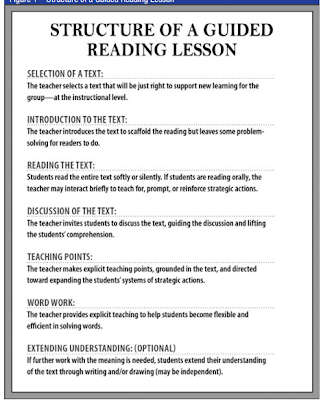Their basic premise is to promote the use of guided reading to challenge students and continuously raise their comprehension levels while encouraging teachers to challenge themselves and continue their professional development.
The things Fountas and Pinnell like about guided reading:
- small group teaching allows for differentiation
- pairs students with texts on the edge of their ability level (not too easy or too hard)
- has teachers doing authentic assessments of student reading levels
- encourages greater variety of reading materials in a classroom

But Fountas and Pinnell offer some warnings. One, that teachers have been pushing students up to too high a level based on their performance in these activities, without looking at how much they truly understand. Two, that allowing student groups to become stagnant doesn't reflect how students are progressing.
"Teachers need to become expert in forming and reforming groups to allow for the differences in learning that are evident in students."
They encourage teachers to draw students into a deeper understanding of text, and to not rely too much on reading levels when it comes to choosing texts.
Fountas and Pinnell actually formed the popular A-Z leveling of books, but even they say it's not everything. A teacher has to consider things that might make a text more or less accessible and therefore understandable to students--it isn't simply a matter of what percentage of words they know. That really resonated with me, as a person who tried to read The Great Gatsby in fifth grade and comprehended approximately none of it.
I enjoyed this article and thought a lot of the visuals were cool and helpful little charts, so I included some here.

No comments:
Post a Comment